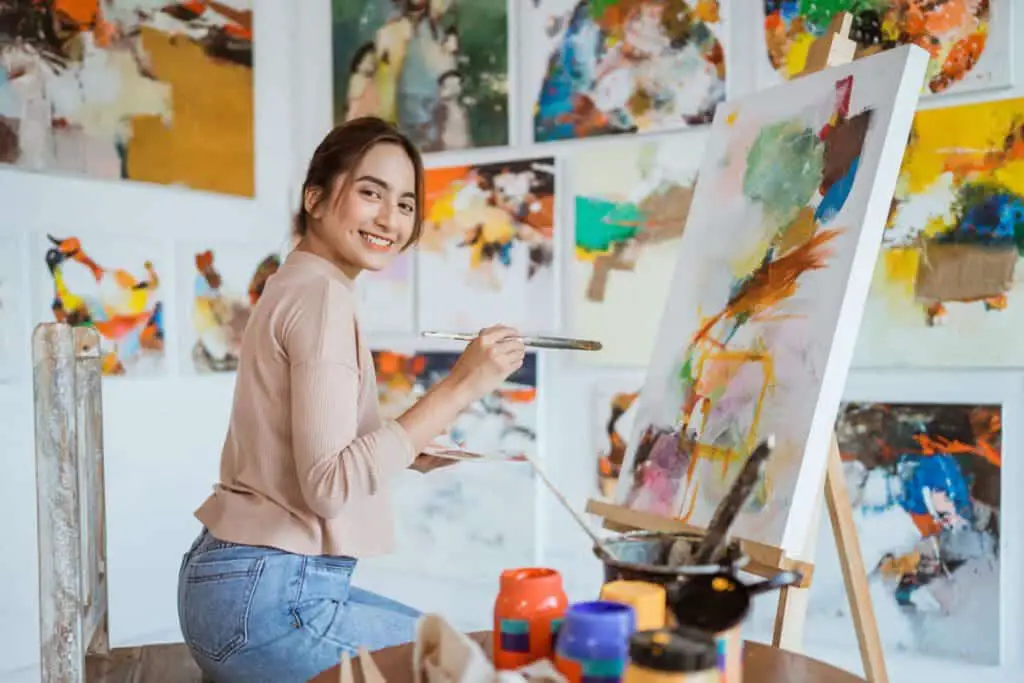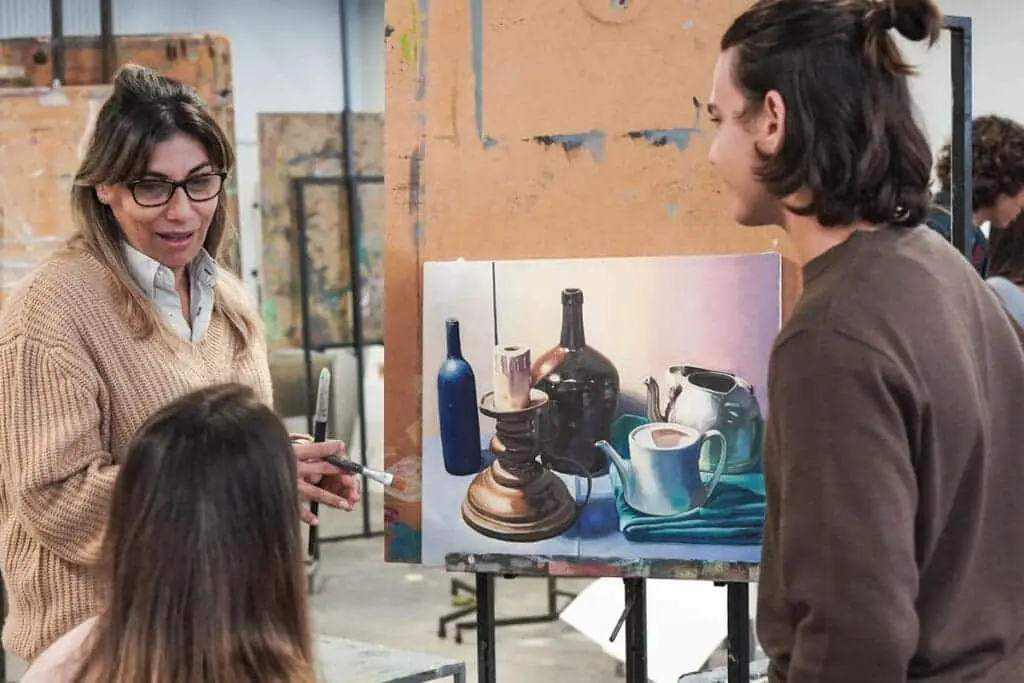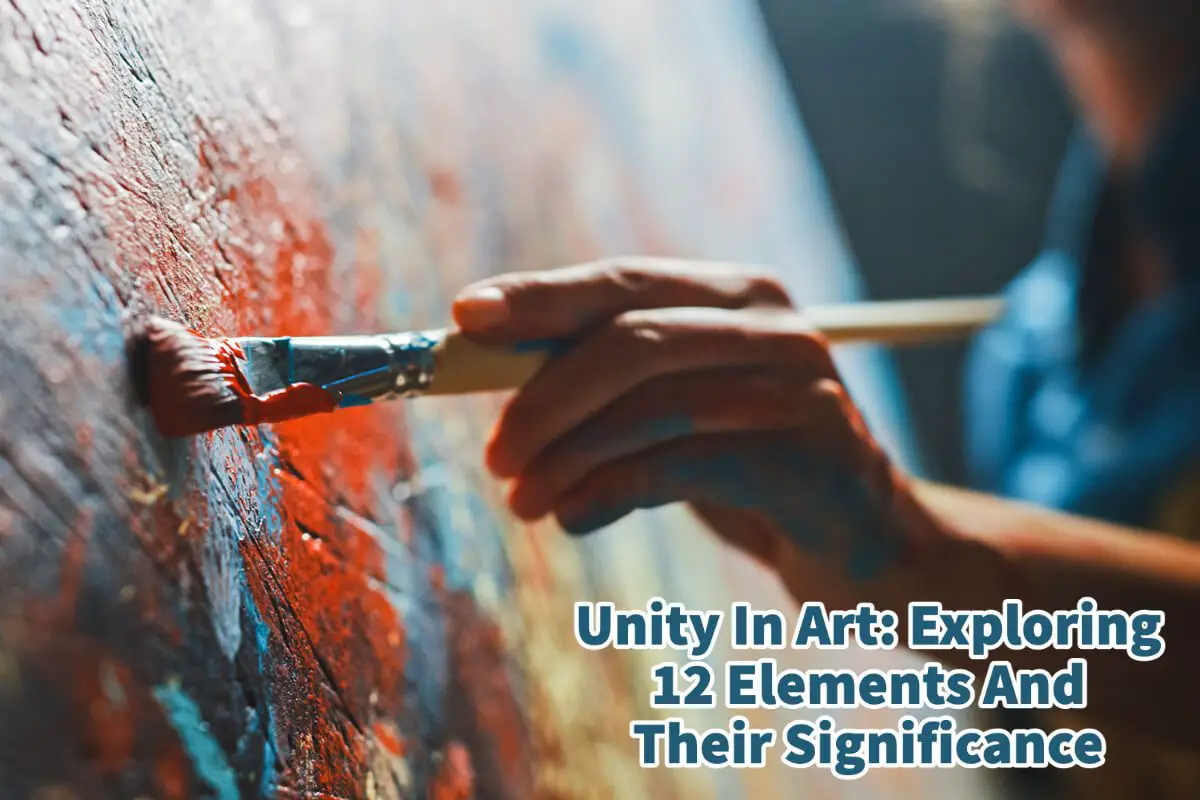Art has the incredible ability to evoke emotions, convey ideas, and bring people together. One essential aspect that contributes to the impact of artwork is unity.
Unity in art refers to the harmonious arrangement of elements and principles that create a cohesive and visually appealing composition. It provides a sense of wholeness and coherence, guiding the viewer’s eye through the artwork while conveying the artist’s intended message.
Table of Contents
- 12 Elements Of Unity In Art And Why They Are Important
- Unity In Art Plays A Crucial Role
- Related Questions
12 Elements Of Unity In Art And Why They Are Important
Unity in the art can help create an impact and engage the art. Twelve essential elements of unity in the art are significant. All of these elements help to ensure unity in the artwork.

Read on as we will delve into the 12 Elements of Unity in Art and explore why they are crucial and how they can be achieved in your art.
Balance In Art
Balance refers to the distribution of visual weight within an artwork. It can be achieved through symmetrical or asymmetrical arrangements. By maintaining balance, artists ensure that no single element overpowers the others, creating a sense of equilibrium and stability.
Harmony In Art
Harmony is the combination of various elements to create a unified whole. It involves consistently and thoughtfully using colors, shapes, lines, and textures that work together cohesively. Harmony creates a sense of cohesion and completeness, leading to a visually pleasing composition.
Contrast In Art
Contrast involves the juxtaposition of elements that are noticeably different. It can be achieved through color, value, texture, size, or shape variations.
Contrast creates visual interest, adds depth, and emphasizes certain aspects of the artwork. It helps highlight focal points and creates a dynamic visual experience.
Repetition In Art
Repetition involves the use of recurring elements throughout an artwork. It can be achieved through repeated lines, shapes, colors, or patterns. Repetition provides a sense of rhythm, continuity, and unity. It helps establish a visual theme and strengthens the overall composition.
Many of the Japanese Ukiyo-E woodblock print artists were experts in using patterns and other repetitions in their artwork.
Proportion In Art
Proportion refers to the relative size and scale of elements within an artwork. It involves finding the right balance between different parts to create a visually pleasing and harmonious whole.
Proper proportion ensures that elements are neither too dominant nor too insignificant, contributing to the overall unity and coherence of the artwork.
Emphasis In Art
Emphasis involves directing the viewer’s attention to a particular element or area within the artwork. It can be achieved through contrasting colors, increased detail, or strategic placement.
Emphasis helps communicate the artwork’s focal point and guides the viewer’s gaze, enhancing unity and impact.
Movement In Art
Movement in art refers to the illusion of action or direction within an artwork. It can be created using lines, shapes, and patterns that suggest motion.
Movement adds energy and dynamism to the composition, engaging the viewer and contributing to unity and flow.
Jackson Pollock is one of our favorite artists with some great movement in his art. You can feel the energy and movement from the canvas when you see his drip paintings.
Proximity In Art
Proximity refers to the arrangement of elements near one another. It involves grouping related or similar elements.
Proximity creates a sense of connection, allowing the viewer to perceive relationships between various artwork parts. It helps establish unity and coherence.
Simplicity In Art
Simplicity involves using minimal and essential elements to convey a message or idea. It emphasizes clarity and avoids unnecessary complexity.
By eliminating distractions, simplicity focuses the viewer’s attention and enhances the overall unity and impact of the artwork.
Mark Rothko was one of our favorite artists who understood the power of simplicity. He understood the power of straightforward and minimalist paintings.
Consistency In Art
Consistency involves maintaining a uniform style, technique, or theme throughout an artwork. It ensures that all elements work together seamlessly and convey a cohesive message.
Consistency strengthens the unity of the artwork, providing a sense of coherence and purpose.
Hierarchy In Art
Hierarchy refers to the organization of elements in order of importance or significance. It creates a visual hierarchy that guides the viewer’s attention and emphasizes critical elements. Hierarchy adds depth and structure to the artwork, enhancing its unity.
Context In Art
Context refers to the understanding and interpreting of artwork within its broader cultural, historical, or conceptual framework. Considering the context in which the artwork is created and displayed helps establish a deeper understanding and appreciation of its unity.
Contextual elements can include symbolism, cultural references, or thematic connections, all of which contribute to the overall unity and meaning of the artwork.
An artist that we love that has some great context in their art is the American Indian artist George Morrison.
Unity In Art Plays A Crucial Role
Unity in art plays a crucial role as it is the underlying force that combines diverse elements into a harmonious whole. The guiding principle allows artists to create visually appealing, emotionally resonant, and intellectually stimulating compositions.

Unity ensures that every element within an artwork contributes to a cohesive narrative or aesthetic, preventing chaos or dissonance. It provides a framework for organizing and arranging colors, shapes, lines, and textures, enabling artists to communicate their intended message effectively.
Without unity, art would lack coherence and fails to engage and connect with viewers profoundly. Whether through balance, repetition, or emphasis, unity acts as the invisible thread that weaves together the various components of an artwork, transforming it into a powerful and cohesive visual statement.
Here are some reasons why Unity in Art is such an essential part of art:
Visual Appeal
A unified artwork is visually pleasing and captivating. It creates a sense of order and coherence, attracting the viewer’s attention and encouraging prolonged engagement.
Communication
Unity helps artists effectively communicate their ideas, emotions, and messages. By harmonizing elements, artists can convey their intended meaning and evoke specific responses from the viewers.
Engagement
A unified composition captures the viewer’s interest and encourages them to explore the artwork further. It provides a sense of discovery and engagement as the viewer’s eye smoothly moves across the composition.
Focus And Emphasis
Unity allows artists to establish a focal point or emphasize specific elements within the artwork. By creating a cohesive composition, artists can guide the viewer’s gaze and direct their attention to critical areas, enhancing the overall impact and message.
Emotional Impact
Unity can evoke strong emotional responses from viewers. A well-structured and harmonious artwork can elicit feelings of serenity, excitement, or even introspection, contributing to a deeper connection between the viewer and the artwork.
Clarity And Understanding
Unity helps viewers comprehend and interpret an artwork more easily. When elements are organized cohesively, it becomes simpler to identify relationships, themes, and narratives embedded within the composition.
Memorable Impressions:
Artworks that exhibit unity tend to leave a lasting impression on viewers. A well-executed composition that demonstrates harmony and coherence remains in the viewer’s memory, making a significant impact long after the initial encounter.
Professionalism And Skill
The ability to create unity in art showcases an artist’s skill, craftsmanship, and understanding of design principles. It demonstrates professionalism and mastery, elevating the artwork and the artist’s reputation.
Unity in art is a fundamental aspect that enhances the impact and effectiveness of visual compositions. The elements of unity work together to establish a sense of wholeness, order, and meaning, enriching the viewer’s experience and allowing for deeper connections with the artwork.
Understanding and applying unity in art empowers artists to communicate their ideas effectively, evoke emotions, and leave a lasting impression on their audience.
Anita Louise Art is dedicated to art education, great artists, and inspiring others to find and create their art. We love art that uplifts and inspires. #ArtToMakeYouSmile! #ArtToMakeYouHappy!
If you are interested to see any of my art, you can find out more by clicking here. If you are interested in what inspires me and my paintings, you can discover more by clicking here.
We have a free newsletter and would love you to be part of our community; you can subscribe to the newsletter by clicking here. If you have any questions, I would be happy to talk to you. You can reach me, Anita, by clicking here.
Subscribe to our Anita Louise Art YouTube Channel with great videos and information by clicking here.
Join us for our podcast “5 Minutes With Art.” Spend just 5 minutes a week with us to discover and learn about great art and artists. You can find out more about our podcast by clicking here.
Related Questions
Where Did Art Come From?
Many historians believe art started first in Africa; many ancient art forms have been found worldwide. Cavemen art is some of the earliest forms of art. Many cultures put art on their bodies through tattooing and other art forms.
By clicking here, you can learn more by reading Where Did Art Come From?.
Art And History – Understanding Our Past
When we study art, it helps us understand and gives us clues to the past. As we see what the artist has painted, we can piece together what life was like during that time in history. Art also helps us better understand the cultures and people who once lived and their life.
You can discover more by reading Art and History – Understanding Our Past by clicking here.
Am I Too Old To Start Oil Painting?
You are never too old to learn to oil paint. You can start to oil paint at any age. If Grandma Moses could learn to paint at age 78, then she sets an example for us all – that you are never too old to learn to paint. There are some advantages to learning to paint when you are older vs. younger.
By clicking here, you can discover more by reading Am I Too Old To Start Oil Painting?.

